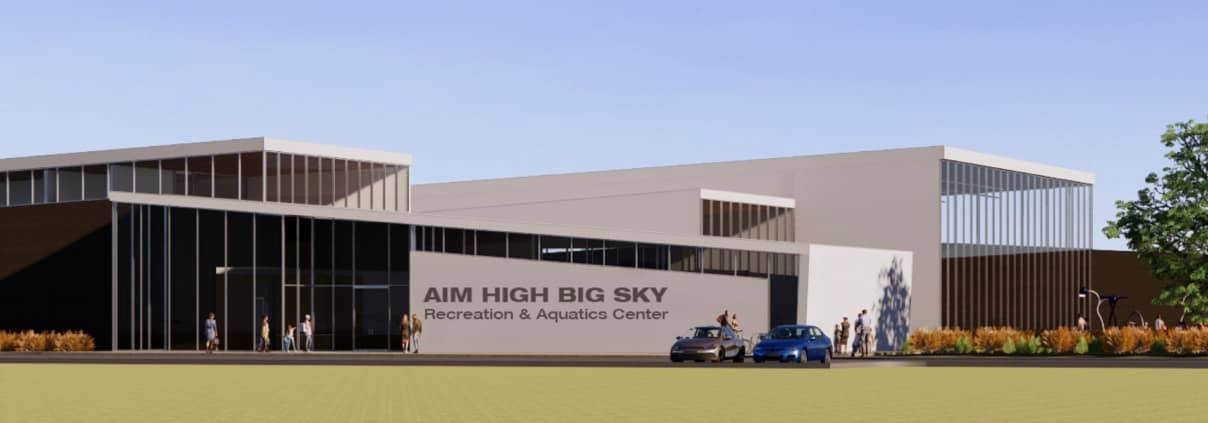Call it what you will—Conflict of Interest by any other name is still Conflict of Interest The Great Falls City Commission voted 4-1 on June 1 to reappoint Big Sky Country National Heritage Area board members Rich Ecke and Ellen Sievert to the city/county Historic Preservation Commission (HPAC). Commissioner Tryon, the only dissenting vote, aptly…
Category: City Commission
City “Aims High” But Does It Miss The Mark?
The Great Falls City Commission approved the Aim High Aquatics and Recreation Center Conditional Use Permit (CUP) at its meeting on May 18. Although cooperation between the Malmstrom Air Force Base and the city is promising and a replacement aquatics facility for the defunct Natatorium is long-awaited, I have a lot of concerns and questions…
Did The City Drop A Doodie In The Pool?
Oh my gosh! Private procurement for architectural and engineering services are one thing, but Federal procurement rules for procurement of such services are quite another. The question is: Did the City of Great Falls violate Federal Procurement Laws relative to Conflicts of Interest – Unfair Competitive Advantage? Federal law places a standard of conflicts of…
Unfair Or Illegal?
Did the City’s Indoor Recreation Center and Aquatic Facility consultant selection process violate the Federal Procurement rules? In June of last year, the City hired a local architectural/geotechnical engineering team, without advertising so all interested local firms could compete for the Department of Defense $10M grant pre-application project. After the award, the City Manager said,…
Stop – In The Name Of Fairness And Common Sense
What’s a 50 meter pool that is 25 meters short? If you answered, “very short-sighted”, you’d be correct, but that’s what you are going to get with the new Indoor recreation Center and Aquatics Facility. Why is a 50M pool an important feature of an Indoor Aquatics Center? According to a Cost Benefit Analysis (CBA)…
Commissioner Houck Requests Closed Ethics Hearing Claiming A “…Personal Attack On Me”
Last summer, I submitted a formal complaint to the Cascade County Attorney against the City of Great Falls regarding use of government resources (aka our tax money) to support a private nonprofit—Big Sky Country National Heritage Area Inc. I cited portions of both the Montana Code Annotated and the Official Code of the City of…
GF City Commission Swaps Kranz Park Land, Tryon Lone ‘No’ Vote
Editors note: E-City Beat has requested and received permission to copy and paste Great Falls City Commissioner Rick Tryon’s reports from his public commissioner’s Facebook page, ‘Rick Tryon for a Greater Great Falls’. “At Tuesday’s (1/19/21) City Commission meeting the commission voted 4 – 1 to approve a land swap between the City of Great…
Forget The Carrot, Keep Your Eye On The Ball
If you are asking why the site selection for the new proposed Indoor Recreation and Aquatics Facility looks like a train wreck waiting to happen, you are not alone. If you have been a resident of Great Falls for even a few years, you probably are aware of the soils issues on the east end…
Tryon’s GF City Commisison Update: Animal Shelter, Voyagers, COVID-19
Here are a few Great Falls City Commission updates and answers to questions and comments I’ve received from folks recently. COVID-19 City County Health Officer Trisha Gardiner provided an update at Tuesday’s city commission meeting and there’s some good news: the numbers in Cascade County are heading in the right direction over the past week…
Great Falls City Commission Hypocrisy
While hypocrisy isn’t exclusive to politicians, it certainly is more disappointing when we see it in our elected officials. Case in point. At last week’s Great Falls City Commission work session, Commissioner Mary Moe presented a draft resolution addressing nondiscrimination, which she authored. Her cover letter includes the following: “I am attaching a draft resolution…









